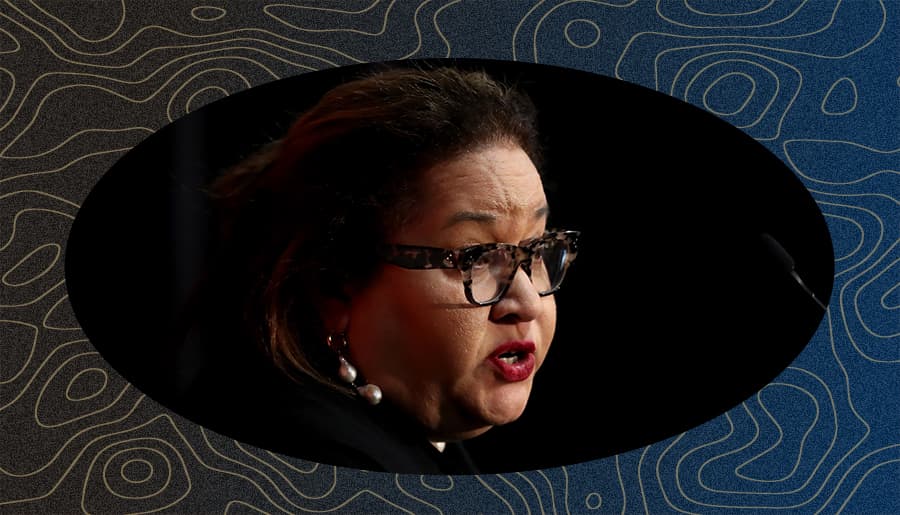The year is 2034. It’s been ten years since the First Nations Voice to Parliament has been established. There was a referendum ages ago, and it won. Additionally, since then, the First Nations Voice to Parliament has gone from stride to stride.
So, if this were the case, what would this institution be doing? What would it be capable of achieving?
Professor Megan Davis, Cobble Cobble woman and Co-Chair of Uluṟu Dialogue, has the answers to these questions. When The Latch asked her about what such a future could hold, she stated, “I would hope that we will have seen tangible progress on the most critical of issues affecting First Peoples today.” This would be done by the First Nations Voice to Parliament “consulting on the laws and policies which affect First Peoples.”
But that’s not all. “I am also hopeful that Australia will have a fuller understanding of its nationhood through the work of the Makarrata Commission,” noted Davis.
If you’re unsure of what Makarrata means, then Noel Pearson provided The Australian with a useful definition of this Yolngu idea. He wrote, “The Yolngu concept of Makarrata captures the idea of two parties coming together after a struggle, healing the divisions of the past. It is about acknowledging that something has been done wrong, and it seeks to make things right.”
Davis additionally explained that the Makarrata Commission would be “charged with supervising the agreement making and truth-telling of the history of this country.”
Now, if you’re worried that this is the only bit of insightful commentary that Davis provided us with, don’t. Because she answered a bunch of important questions about what the First Nations Voice to Parliament is and how it’ll operate. So let’s dive into what she had to say.
Dealing With Politicians
Davis is concerned that aspects of the First Nations Voice to Parliament are being misunderstood by some of the general public.
“I think for us, we want to reinforce that the Voice will not be a third chamber of Parliament,” she explained. “We have addressed this many times since the Turnbull Government first made the claim back in 2017. The Voice will advise our government of the day on matters concerning the lives of First Nations Peoples. It will not have any hidden powers or veto abilities.”
Moreover, Davis emphasised that Anthony Albanese’s team is a different kettle of fish compared to the aforementioned administration. She truly believes that our current government can help bring the First Nations Voice to Parliament that she’s imagined into reality.
“We have worked closely with the Albanese Government throughout this process,” said Davis. “The draft question and amendment the Prime Minister released at Garma Festival was based on our submission.”
“We are confident that this Government will deliver a Voice during Albanese’s first term,” Davis expressed later on. “The collaboration we have seen so far is a clear sign that the Voice will be listened to into the future.”
Related: Aboriginal Flag Flies From Sydney Harbour Bridge Forever
Related: A Referendum to Enshrine an Indigenous Voice in the Constitution
Is Australia Ready for a First Nations Voice?
For the First Nations Voice to Parliament to be a reality, it first needs to win a referendum. Davis is confident that this can happen. She explained, “Recent polling from The Australia Institute shows that people are more in favour than ever before of a First Nations Voice. This is consistent with our own polling and is a clear sign of how important it is that we carry on this conversation between now and the referendum.”
“History is calling. The people of Australia are ready to answer. Let’s get this done.”
Read more stories from The Latch and subscribe to our email newsletter.







